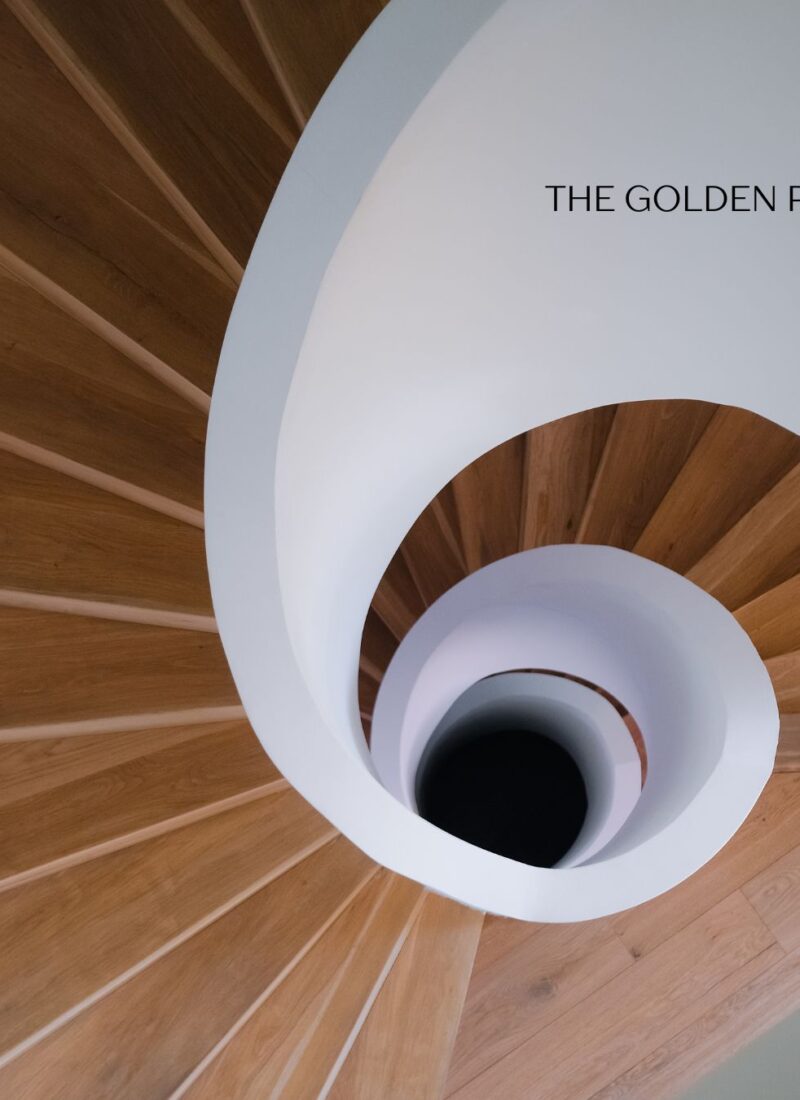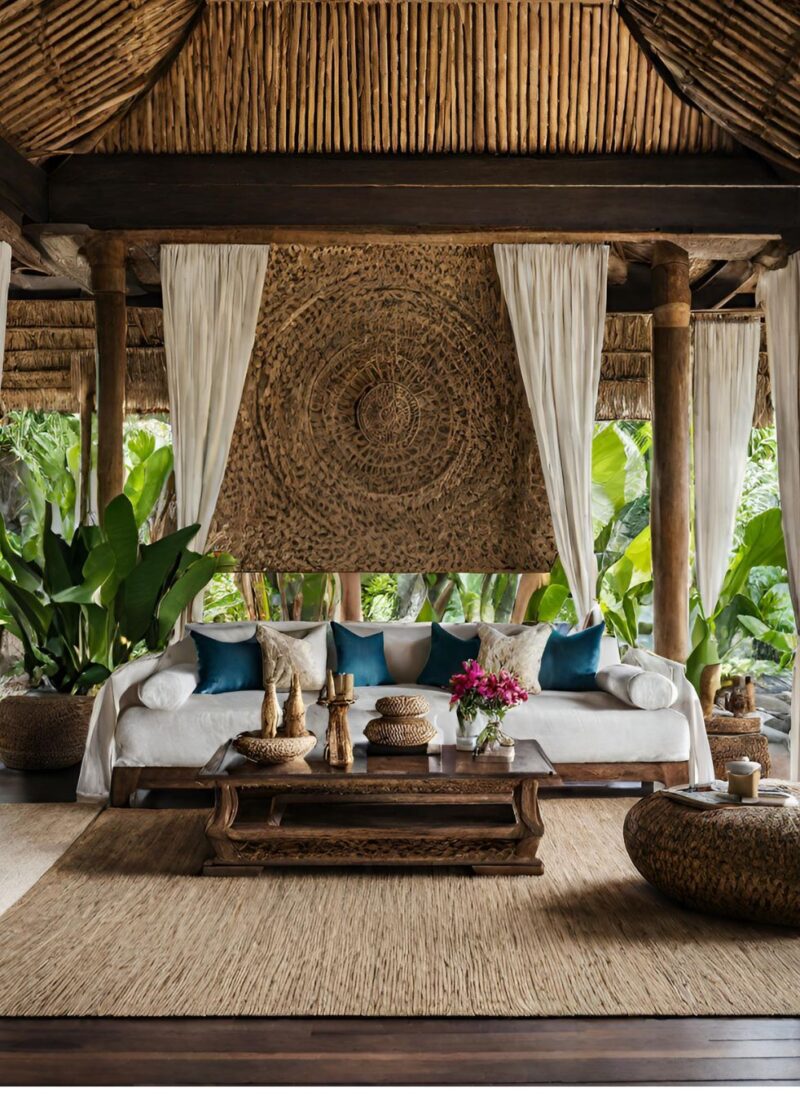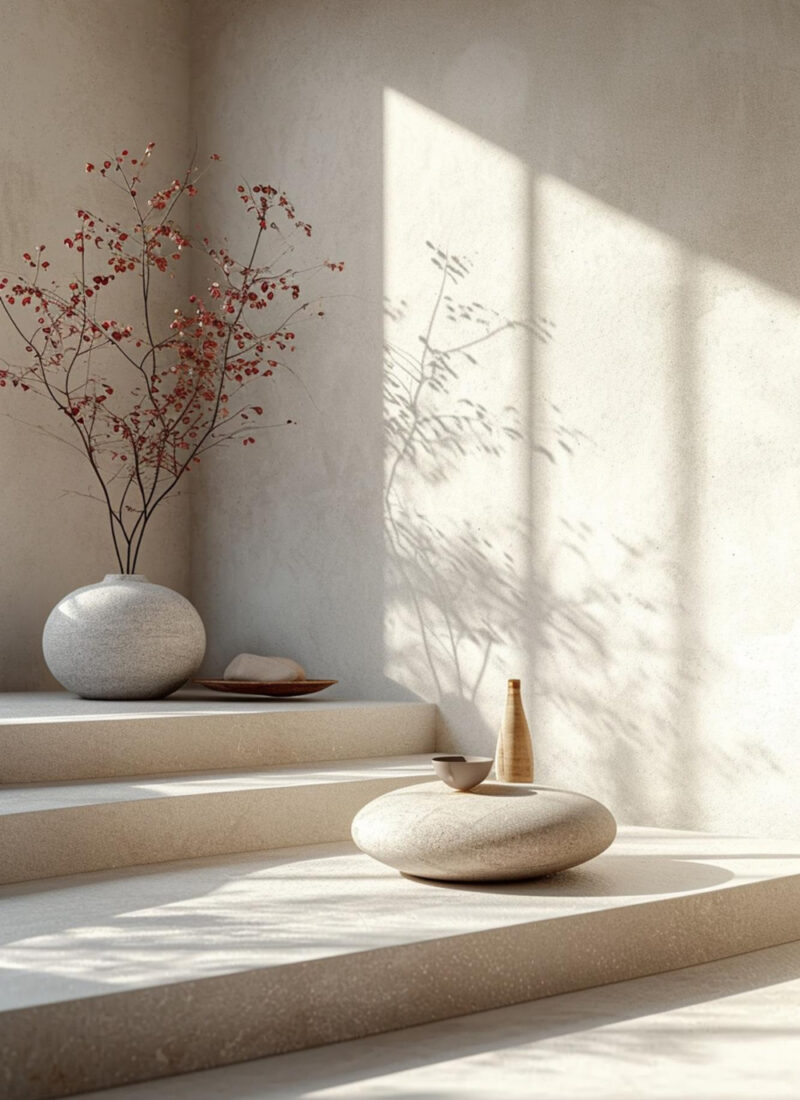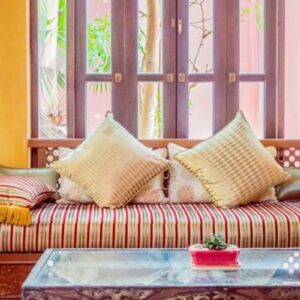The Mid-Century Modern design can be defined by gentle curves, organic shapes, and natural colors, all integrated into different materials. While the Mid-Century Modern interior design had its heyday around the 1930s until the late 1970s, it has been revived and appreciated until now. What sets this design apart is that the mid-century veers away from opulence and sticks to minimalism.
This article discusses what you need to know about Mid-Century Modern Design. You will learn what makes this design principle enduring and classic.
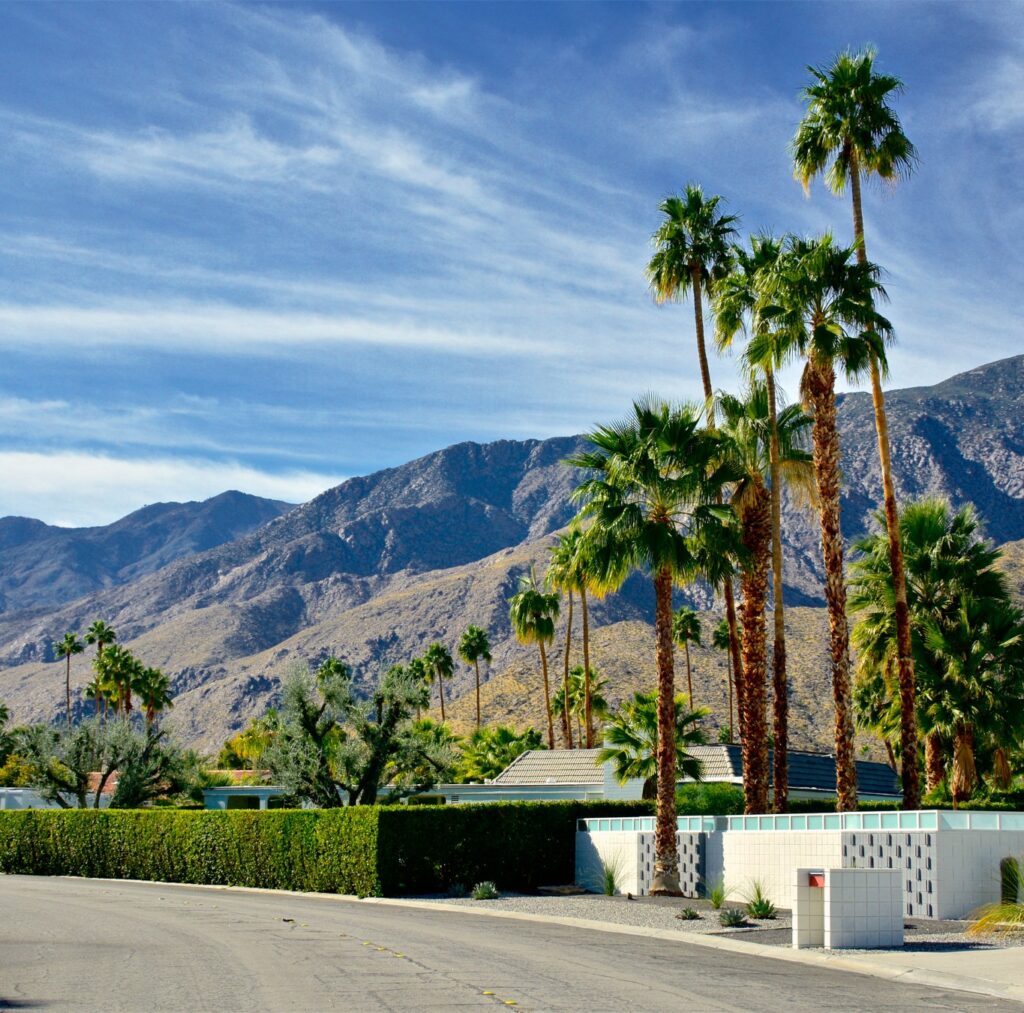
Mid-Century Modern Design Brief History
Mid Century Modern design blossomed during the time when World War II had just ended. There was a need for housing, and it was needed fast. Mass production was the answer. This resulted in housing and furniture that were cheap and easy to reproduce. At the same time, there is excellent migration from rural areas to big urban cities. This prompted smaller living spaces.
The Mid Century is an encompassing era that spans 3 decades, from 1945 until 1975. Cara Greenberg coined the phrase The Mid-Century in her book Midcentury Modern: Vintage Furniture of the 1950s. Sleek lines, Walnut or earth tones, functionality, and scanty ornamentation curate the interior design. Ever since then, this modernist design has been admired for its timelessness by many well-known architects, including Richard Neutra, Isamu Noguchi, and Charles and Ray Eames.
Some of the iconic Mid-Century furniture
- Eames Lounge Chair
- George Nelson Marshmallow Sofa
- Herman Miller Chairs
Mid-Century Modern Design Characteristics
There are a few characteristics that the Mid-Century Modern Style holds:
It’s Minimalist
One of the most distinguishing facets of the Mid-Century aesthetic is minimalism. For example, you’d find uncluttered spaces and minimalist lines. While design pieces often have simple lines with wooden or metal legs.
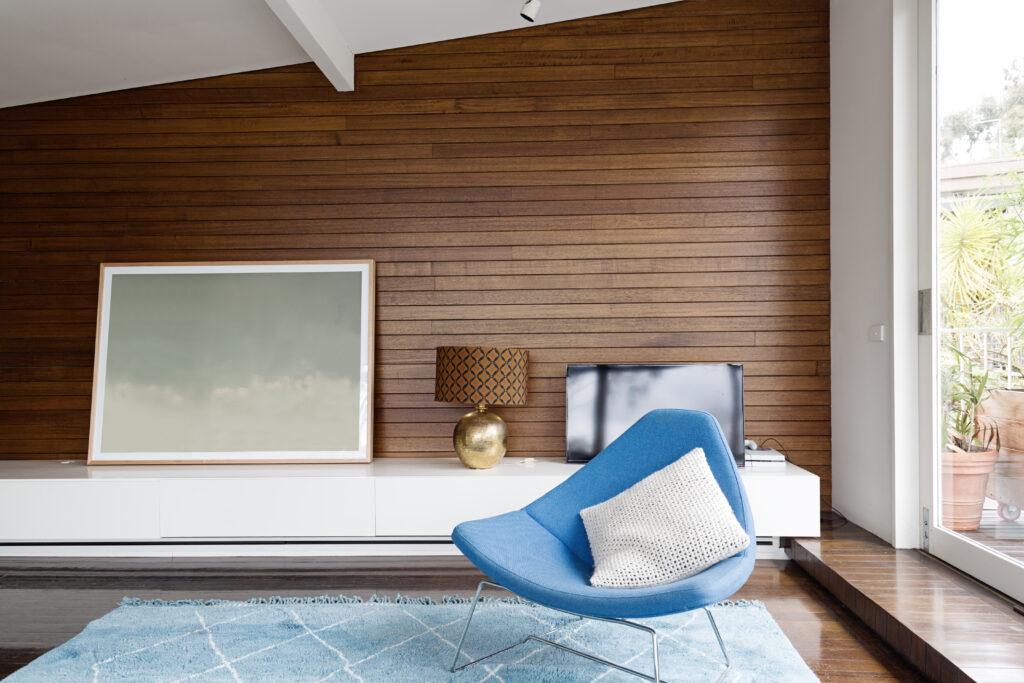
Simple
Perhaps the most distinctive characteristic of this design is its simplicity. Clutter-free, the Mid-Century modern home has focused on larger furniture pieces. The devil isn’t in the details in this case.
It’s a mix-and-match of materials
You can find combinations such as vinyl and wood or fiberglass and marble. The fundamental design ideas are the fusion of man-made and natural materials. If used properly, these materials can make your house look like it was built in the 1950s.
Predominantly neutral colors with pops of color
To balance the primary colors, designers add bright accents to keep the design of the room dynamic. Nonetheless, mix earthy greens with the natural color of the wood for the classic Mid-Century room.
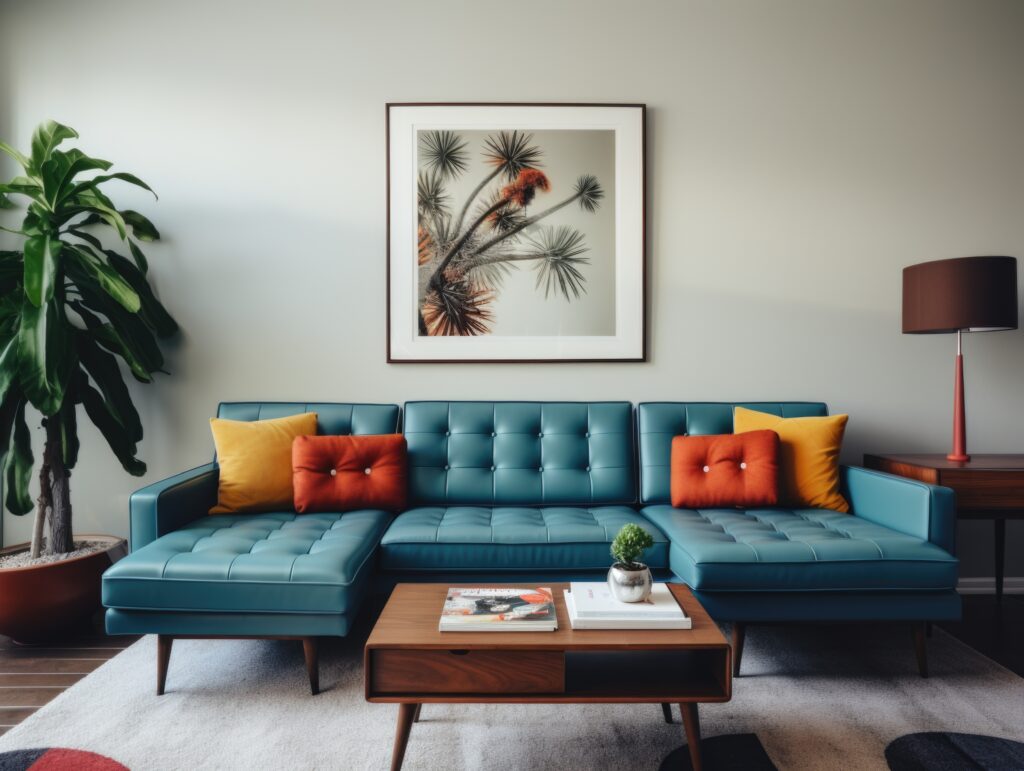
Get Inspired by Nature
Keep grounded in nature. This design is deeply rooted in nature. This design aesthetics combines nature into the design process, incorporating indoor plants into the design or creating an ambiance that adds the outdoor landscape with the interior wooden design pieces. Other examples include sliding doors, a cocktail table, or a retro kitchen with wooden accents, giving rustic vibes.
Mid-Century Modern Design Tips
Mid-century interior design styles have a minimalistic approach where function is emphasized over form.
Wood
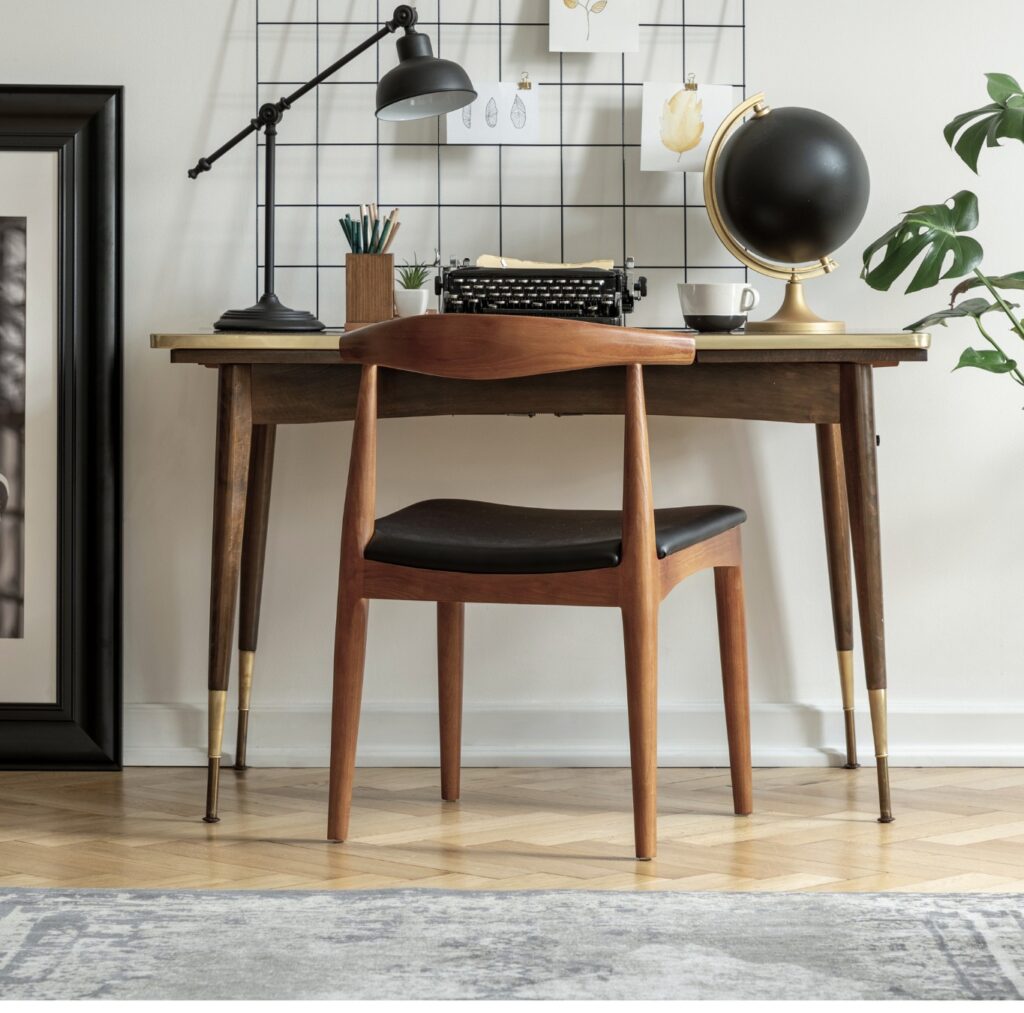
Mid-Century furniture is predominantly made of wood, preferably from teak, rosewood, or oak. This material is commonly used in cabinets, coffee table, and desks. What makes this different from other principles is its simplicity. Mid-Century modern furniture is devoid of ornate details. Wood is often used with unnatural materials such as plastic, rubber, and lucite.
Silhouette
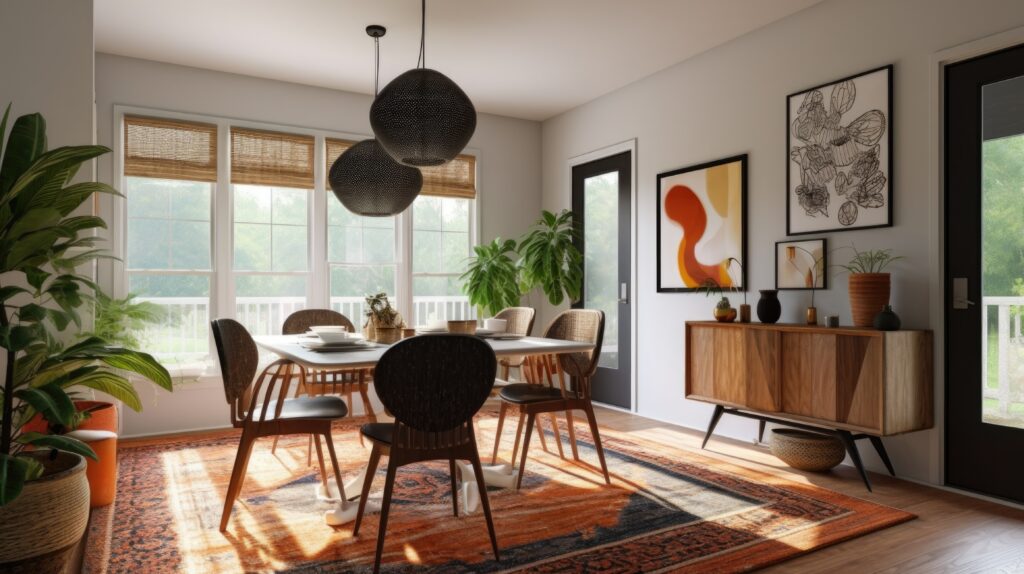
Midcentury’s perfect style uses different kinds of shapes, from curvy and sleek sofas to ultra-geometric tables and sculptural piece of furniture. One can categorize the modern aesthetic look into three groups: the biomorphic, the machine, and the handcrafted, old and new.
The biomorphic shape is often molded as shapes close to nature. Two examples are boomerangs and kidneys. The machine look has its shape inspired by the Bauhaus and streamline moderne schools of art. The machine’s look has futuristic shapes that mix form and function. One fine example is the ball wall clock by George Nelson. Lastly, the handcrafted category combines leather and sculpted wood.
Color
Another central element is how color is used to achieve balance. Color can be used boldly to accentuate a statement piece or monotonously to make most mid-century pieces cohesive.

Open Floor Plans
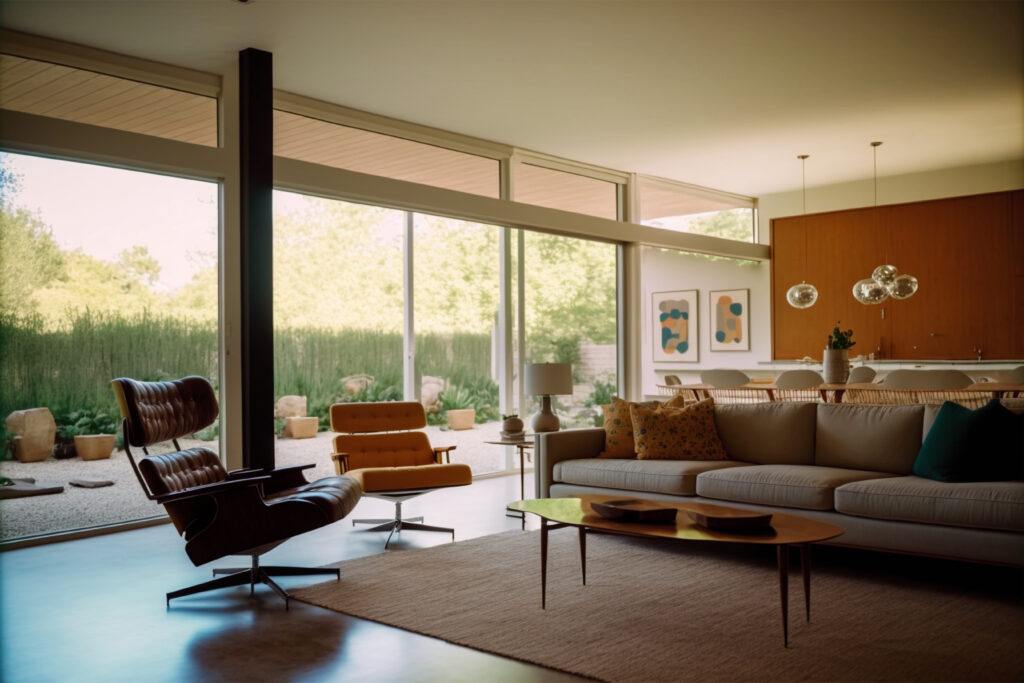
Midcentury homes tend to have open layouts but use room dividers to create a distinct area and split-level illusion.
Textures
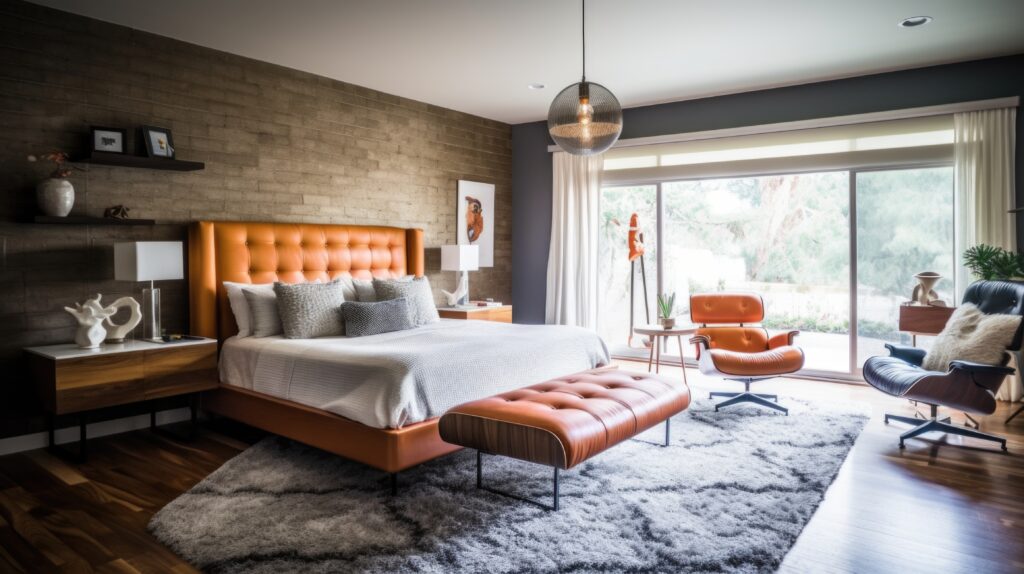
A hallmark of this design is its embrace of diverse textures adding a tactile and visual contrast to the sleek furnishings and natural materials typically associated with mid-century design. This juxtaposition creates a striking balance, infusing warmth and a touch of nature into the modernist aesthetic, contributing to the style’s timelessness and appeal
Retro Art
Another distinct element in a Mid-Century home is adding a piece of art and decor. There should be at least one statement artwork that could cover the majority of the room. You can use the art piece as an accent piece.
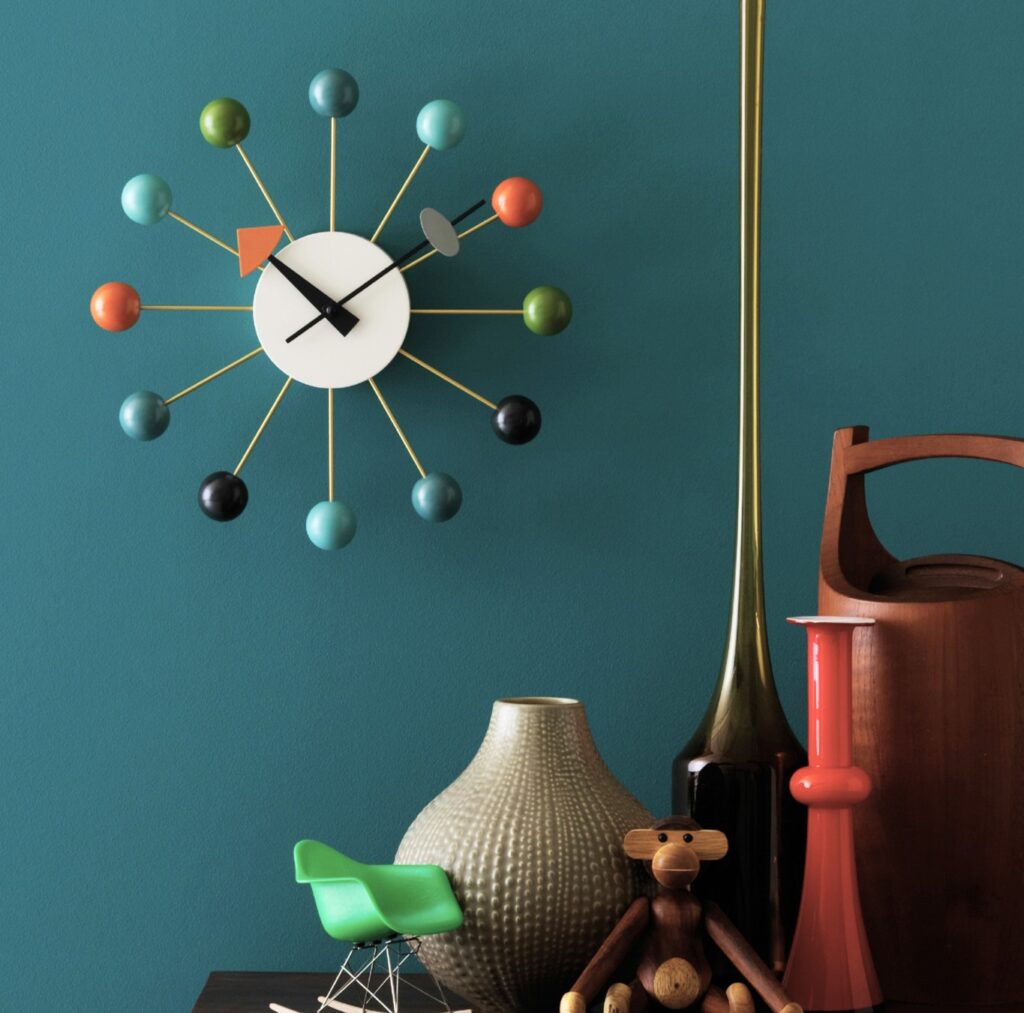
Lighting
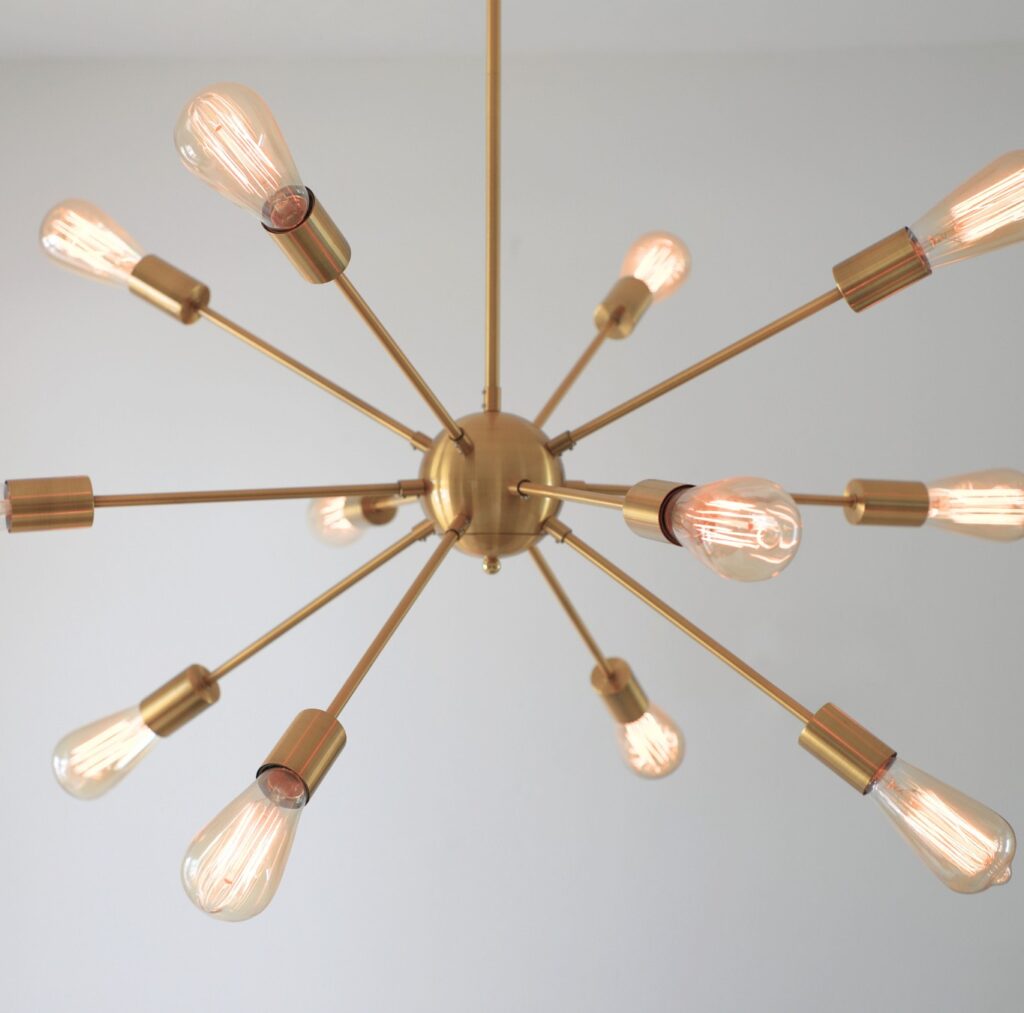
The lighting should be bold. Mid-Century Modern lightings are not wall-mounted. Instead, they are hanging installations or standalone signature floor lamps, giving a timeless and retro feel simultaneously. Natural light is much used during the day.
Is The Mid-Century Modern Design for You?
The rise of the Mid-Century retro style and furnishing in Scandinavian culture highlights the importance of functionality; each piece functions in multiple ways instead of just being a design piece that’s only discussed during parties. The Mid-Century is for people who prefer functionality but won’t hesitate to experiment and combine different materials. This is also for someone who likes to inject vintage pieces here and there in their home but not all the way.
The Mid-Century home has a lingering effect that, even after more than 5 decades, its appeal has never waned. As a matter of fact, It still continues to enjoy its popularity because of its casual and lounge-ready feel. Here are some tips when decorating your rooms with a Mid-Century design.
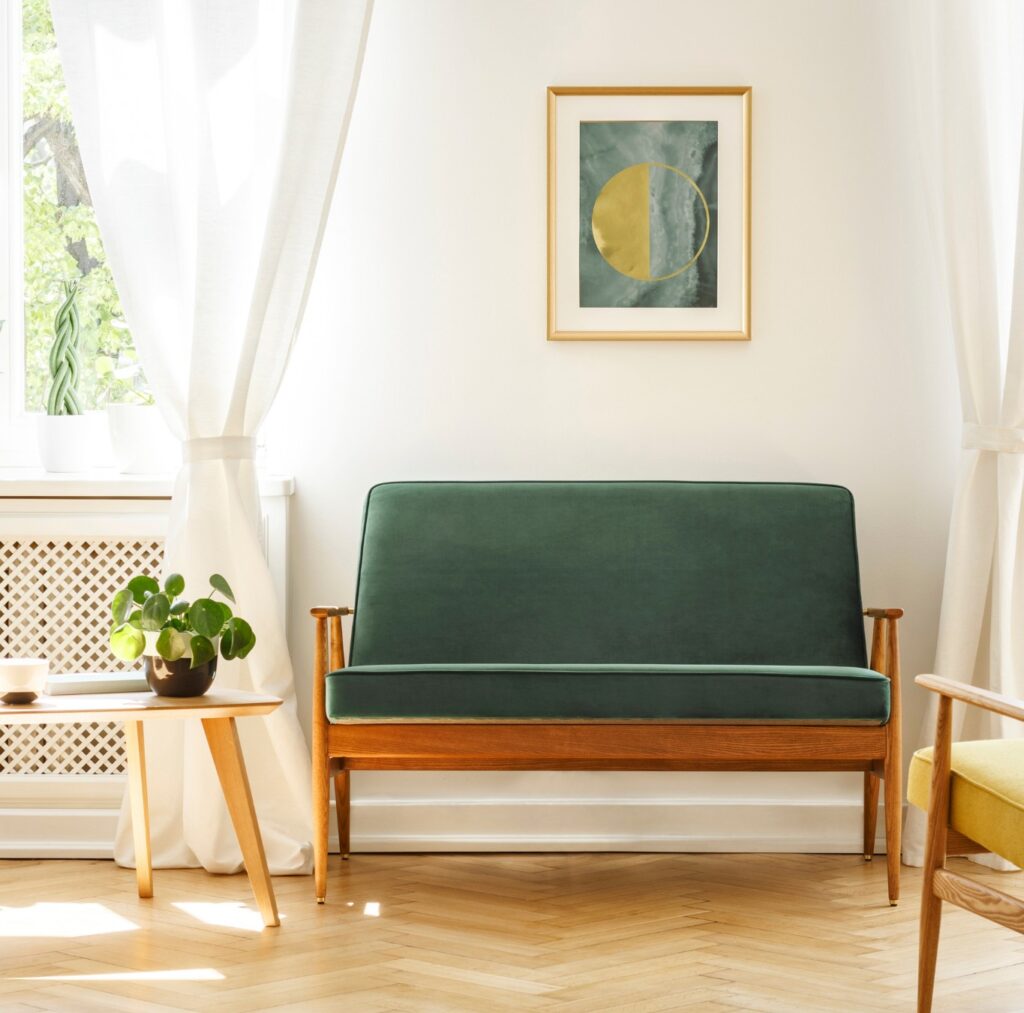
To End
The Mid-Century design follows function over form, like the minimalist movement. Each design piece has a function. This is one of the reasons why the Mid-Century design is still circulating today. Didn’t find what you’re looking for? We are here to help. Contact us now.
